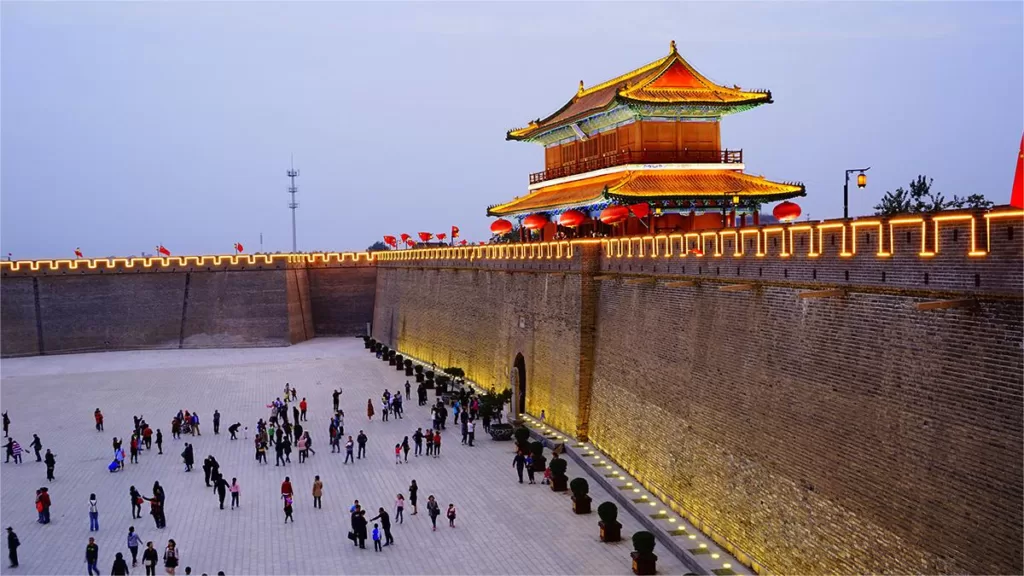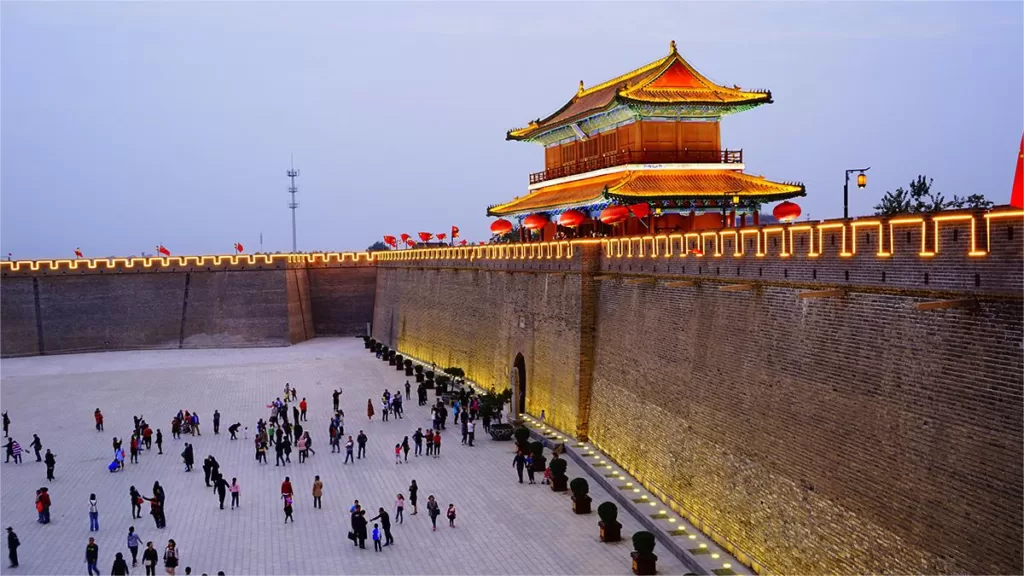Muralha da cidade de Zhengding - História, preço dos bilhetes, horário de funcionamento, localização e destaques


In the heartland of China, nestled within the bustling city of Shijiazhuang, stands an ancient sentinel of history, the Zhengding City Wall (正定城墙). This majestic fortification, initially constructed in 352 A.D. during the East Jin Dynasty, has borne witness to over a millennium of dynastic ebbs and flows, embodying the enduring spirit of Chinese civilization. With its rich history and significant architectural evolution, Zhengding City Wall, originally named Anlelei, has stood as a symbol of safety, protection, and resilience for generations.
Índice
- Informações básicas
- Localização e transporte
- Origin of the City Wall
- Expansion in Tang Dynasty
- Remains of Ming Dynasty
- Four Gates
- Testament of Zhengding’s Glory Days
- Video about Zhengding City Wall
- Outras atracções no condado de Zhengding
Informações básicas
| Duração estimada da excursão | 0,5 - 1 hora |
| Preço do bilhete | Grátis |
| Horário de funcionamento | 8.30 – 17.30 (1st April – 31st October) 8.30 – 17.00 (1st November – 31st March the next year) |
| Número de telefone | 0086-0311-88789987 0086-0311-88786560 |
Localização e transporte
Zhengding City Wall is situated in the historic city of Zhengding, which is located within the greater metropolitan area of Shijiazhuang, the capital city of Hebei Province in northern China. Tourists can take bus 130.136, 150, 152, or 177 and get off at Zhengding South Gate.
Origin of the City Wall
The origins of Zhengding City Wall date back to the East Jin Dynasty, when it was built under the name Anlelei, signifying a safe and pleasant rampart. However, it was during the North Zhou Dynasty (557-581) that the wall saw substantial expansion, transforming into a small stone city with a perimeter stretching 6.5 kilometers. This expansion marked the beginning of Zhengding City Wall’s journey towards becoming an enduring testament to Chinese architectural prowess.
Expansion in Tang Dynasty
During the illustrious Tang Dynasty, General Li Baochen recognized the strategic importance of Zhengding City Wall. He initiated further expansion, extending its perimeter to an impressive 10 kilometers. This expansion was not solely driven by military considerations; it also aimed to mitigate the threat posed by the unpredictable Hu Tuo River, ensuring the safety and prosperity of the city’s inhabitants. This decision by General Li underscored the wall’s dual role as both a formidable defense structure and a guardian against natural calamities.
Remains of Ming Dynasty
As the centuries passed, nearly every dynasty that ruled China contributed to the maintenance, renovation, and expansion of Zhengding City Wall. Each period left its unique imprint on the wall, showcasing the evolving architectural styles, defensive strategies, and engineering achievements of their respective times. However, it was during the Ming Dynasty that the wall, as we know it today, took shape.
The remains of Zhengding City Wall predominantly reflect the architectural splendor of the Ming Dynasty. These formidable remnants of the past rise impressively to a height of almost 12 meters, with a width spanning 6 meters, enveloping a vast perimeter of 12 kilometers. It is within these imposing dimensions that the true magnificence and resilience of this ancient structure come to life.
Four Gates
A defining feature of Zhengding City Wall is the presence of four stately gates, each with its unique historical significance and architectural charm. These gates, named Yingxu Gate, Zhengyuan Gate, Changle Gate, and Yongan Gate, not only serve as entrances to the city but also play a pivotal role in the city’s defensive architecture.
Each gate is fortified with triple walls, forming an intricate and formidable defense system. This complex layout ensured that any potential invader faced formidable obstacles and well-coordinated defenses, making Zhengding City Wall a formidable fortress during its prime. Beyond their defensive function, these gates are also portals through which history, culture, and tradition have flowed, connecting the city to the outside world.
The Yingxu Gate, with its grandeur and historical significance, stands as a testament to the city’s importance during different dynastic eras. Zhengyuan Gate, meanwhile, remains an iconic example of Ming-era architecture, drawing visitors with its intricate details and imposing stature. Changle Gate embodies the city’s enduring resilience, having weathered countless storms both literal and metaphorical. Lastly, Yongan Gate represents the enduring spirit of Zhengding and its unwavering commitment to safeguarding its heritage.
Testament of Zhengding’s Glory Days
Beyond its architectural grandeur, Zhengding City Wall offers visitors a unique window into China’s illustrious history. Walking along its well-preserved ramparts, one can sense the passage of time, from the ancient East Jin Dynasty to the glory days of the Ming Dynasty and beyond. The wall’s strategic location allowed it to witness pivotal moments in Chinese history, offering a tangible connection to the past that few other structures can provide.
Today, Zhengding City Wall stands not only as a historical relic but also as a symbol of resilience, adaptability, and cultural continuity. It serves as a reminder of China’s enduring commitment to preserving its heritage, safeguarding its people, and connecting generations through the echoes of history.
As the sun sets over Shijiazhuang, casting a golden hue upon the ancient stones of Zhengding City Wall, one can’t help but marvel at the intricate tapestry of history woven into its very foundation. This remarkable monument, born during the East Jin Dynasty, has grown and evolved with the centuries, standing tall as an enduring testament to the spirit and legacy of China. In the shadow of this formidable rampart, the echoes of dynasties past continue to resonate, inviting all who visit to step back in time and partake in the enduring story of Zhengding City Wall.
Video about Zhengding City Wall
Outras atracções no condado de Zhengding

Templo de Longxing, Zhengding

Rongguofu (Mansão Rongguo), Zhengding

Pagode Hua do Templo de Guanghui

Linji Temple, Zhengding

Templo de Kaiyuan, Zhengding
Locais históricos de Hebei, Atracções de Shijiazhuang